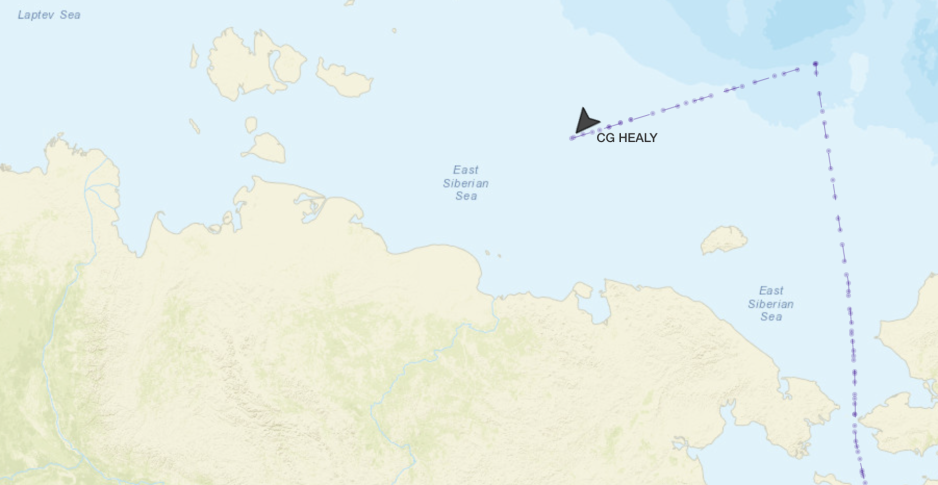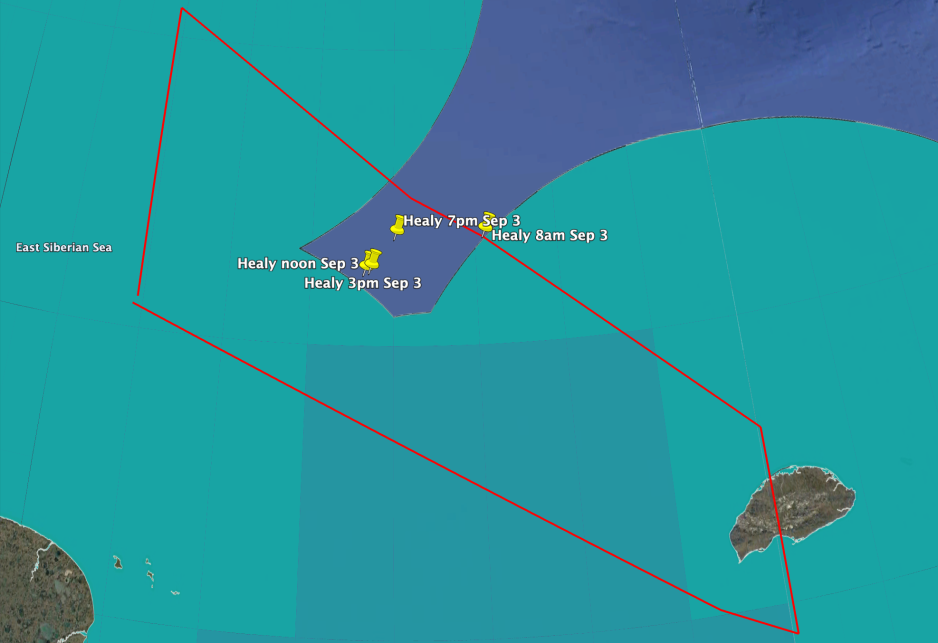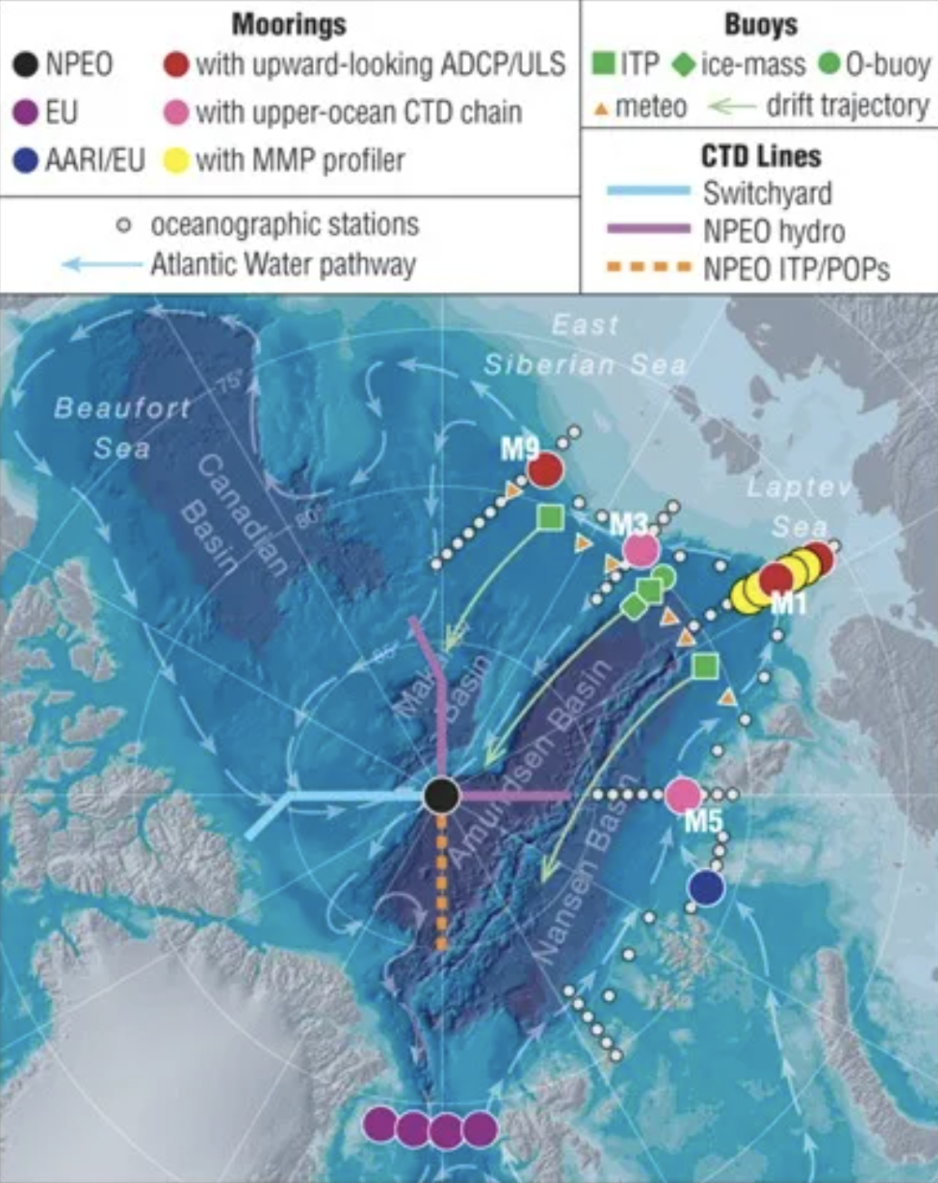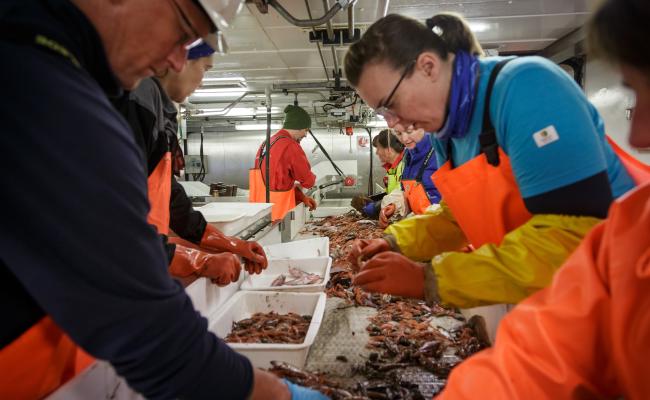US Coast Guard Icebreaker Sails in Proximity to Russia’s Northern Sea Route

USCGC Healy’s path across the Bering Strait and into the East Siberian Sea. (Source: MarineTraffic)
A US science mission has taken Coast Guard icebreaker Healy into the East Siberian Sea in proximity to cargo vessels transiting Russia’s Arctic waters. Automatic Identification System data suggest the vessel has entered what Russia considers the waters of its Northern Sea Route, though experts caution that it is too early to draw conclusions.
The US Coast Guard icebreaker Healy finds itself in unfamiliar waters as it becomes the first US government surface ship to venture into proximity of Russia’s Northern Sea Route (NSR) in the East Siberian Sea in several decades.
Based on Russia’s definition of the NSR boundary and the ship’s location on 3 September 2023, it may have entered the route’s waters, though experts caution that precise locations can be difficult to determine at high latitudes.
The vessel is servicing probes of the Nansen and Amundsen Basins Observational System (NABOS). Its month-long mission takes it across the East Siberian Sea and Eurasian Basin to recover, service, and deploy nine long-term subsurface mooring arrays.

USCGC Healy navigating outside Russia’s Exclusive Economic Zone (green shaded area) but inside District 24 of the NSR (red polygon) on 3 September 2023. (Source: Author’s own work with AIS data and NSRA information)
Russia claims control over NSR
Russia has established regulatory control over the route requiring ships planning to use the route to apply and receive permits to enter its waters. It also specifies ice-class requirements depending on sea ice conditions and navigation season.
Icebreakers conducting scientific missions from other nations, such as China and Germany, have routinely followed Russia’s established procedures and applied for NSR permits. China’s Xue Long conducted a transit in 2017 followed by Germany’s Polarstern in 2019.
According to the route’s administrator, Rosatom, the Coast Guard's Healy has not applied or been granted a permit for the NSR.

Russian NSR records from 2017 and 2019 showing permits for Xue Long and Polarstern. (Source: NSR Administration)
However, as a government vessel Healy may be exempt from requiring a permit, as long as it stays outside areas claimed by Russia as internal waters, explains Rebecca Pincus, Director of the Polar Institute at the Wilson Center, a think tank.
If Healy were to travel along the route along internal waters without permit it would challenge Russia’s regulatory regime of these waters.
Such an event could under certain circumstances constitute a Freedom of Navigation Operation (FONOP) under international maritime law, which the US routinely conducts e.g. in the South China Sea.
“Russia has recently tightened restrictions on warships operating in internal waters (including the four straits of the NSR), so if Healy went into one of those areas, then we might be looking at a FONOP,” Pincus elaborates.
A full transit may be coming
While Healy has completed periodic voyages across Canada’s Northwest Passage, there have been no US surface missions across the NSR since at least the 1980s.
Records show that the now-defunct US Coast Guard icebreaker Polar Sea drifted for three months in the Beaufort and Chukchi Seas in 1982, though it is unclear if its path took it across the NSR.
An earlier attempt, of what would today be considered a FONOP, in 1965 and 1967 across the Vilkitsky Strait along the NSR by a US icebreaker was blocked by the Soviet Union.
Last year’s US National Defense Authorization Act called for the US Coast Guard to provide a report during 2023 on the “feasibility and timeline” of conducting a NSR transit.
Depending on the routing, a transit could constitute a FONOP – for example if the US vessel were to pass through international straits along the NSR.

Location of the moorings Healy is expected to visit. (Source: UAF)
During its 38-day mission the vessel will next travel to the Laptev Sea where additional moorings are located before concluding the voyage in Norway next month.
“While Healy is not at present challenging Russian claims in the NSR, it appears to be on a long transit of the eastern Arctic in the course of its Arctic science mission and will arrive in Tromsø later this year."
“I would imagine that its progress will be carefully monitored by the Russians,” concludes Pincus.




